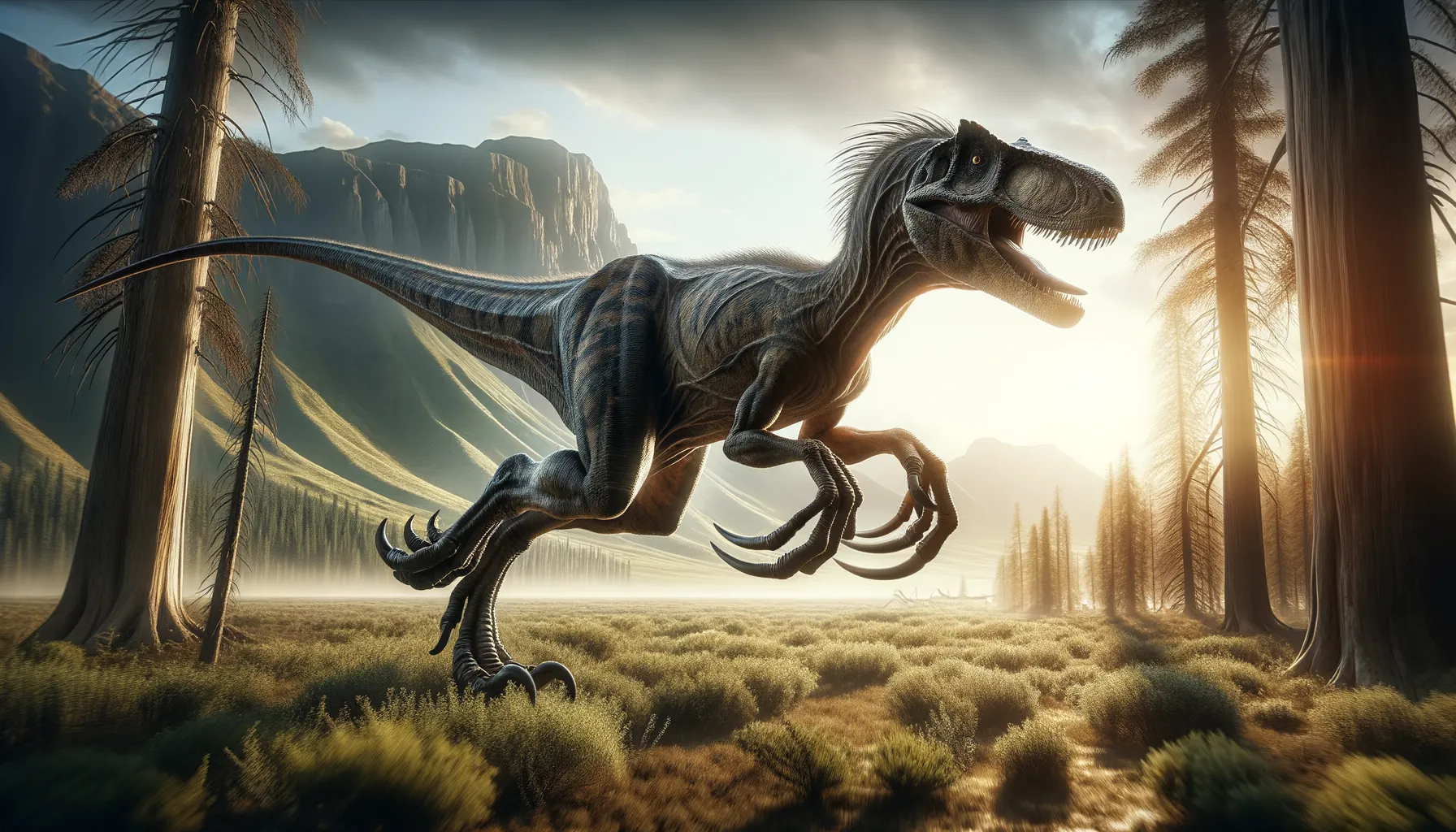
Dakotaraptor
Swift predator of the prehistoric plains.
Period
Cretaceous
Length
Measured around 16 to 18 feet in length.
Height
Stood approximately 5 feet tall at the hip.
Weight
Weighed about 220 to 330 pounds.
Dakotaraptor was a large, agile predator that roamed the Late Cretaceous period. With its long legs and powerful claws, it was built for speed and agility. This dinosaur belonged to the raptor family, known for its hunting prowess and keen intelligence. Fossils suggest that it inhabited areas that are now part of North America. Its discovery has shed light on the diversity of theropod dinosaurs during this era.
Diet
Dakotaraptor was a carnivore, primarily preying on smaller dinosaurs and possibly scavenging the remains of larger ones. Its sharp teeth and claws were well-adapted for capturing and consuming meat.
Hunting
As an active predator, Dakotaraptor likely used its speed to chase down prey. It may have hunted in packs, which would allow it to take on larger or more difficult targets.
Environmental challenges
Living during the Late Cretaceous, Dakotaraptor faced a dynamic environment with changing climates and evolving ecosystems. Competition for resources was fierce, with numerous predators and herbivores coexisting. Adaptations in hunting strategies and social behavior were crucial for survival.
Speed
Estimated to be quite fast, possibly reaching speeds similar to a modern ostrich.
Lifespan
Likely lived up to two or three decades.
First discovery
Discovered in South Dakota, USA, in 2005.
Fun Facts
- Dakotaraptor was a large, feathered dinosaur that lived around 66 million years ago during the Late Cretaceous period.
- It measured about 17 feet in length, making it one of the largest dromaeosaurid theropods.
- Fossils of Dakotaraptor were discovered in the Hell Creek Formation in South Dakota, hence its name.
- Dakotaraptor had large, sickle-shaped claws on its feet, which it likely used to hunt prey.
- This dinosaur is thought to have had a keen sense of smell, aiding in its role as a predator.
- Dakotaraptor is believed to have been covered in feathers, potentially aiding in temperature regulation and display.
- Despite its bird-like features, Dakotaraptor could not fly, but it was likely a fast and agile runner.
Growth and Development
Dakotaraptor hatchlings were likely dependent on their parents for protection and food initially. As they matured, they developed the necessary skills to hunt and survive in the wild. Growth rates might have varied depending on environmental conditions and food availability.
Habitat
Dakotaraptor inhabited floodplain environments consisting of rivers and forests. This habitat provided ample opportunities for hunting and foraging. Seasonal changes may have impacted its hunting strategies, prompting migrations or adaption to different prey.
Interaction with other species
Dakotaraptor coexisted with various herbivorous dinosaurs, which were potential prey. It may have competed with other large predators for food and territory. Interaction with other species involved intricate dynamics of predator-prey relationships and ecological balance.
Natural lifespan
The average natural lifespan was approximately 20 to 30 years.
Reproduction
Like many theropods, Dakotaraptor may have laid eggs in nests built on the ground. Parental care, such as guarding the nest and feeding young, may have been part of their reproductive strategy. The eggs and young raptors were vulnerable to predation, requiring vigilance from parents.
Social behaviour
Dakotaraptors may have hunted and lived in groups, suggesting social structures similar to those of modern pack-hunting animals. Communication and cooperation within these groups could have been vital for successful hunting and defense against larger predators.
Fossil locations
Dakotaraptor fossils were primarily found in South Dakota, USA. These discoveries have been crucial in understanding the presence of large raptors in North America during the Cretaceous period. Fossil sites often include well-preserved remains that provide insight into their anatomy and lifestyle.
